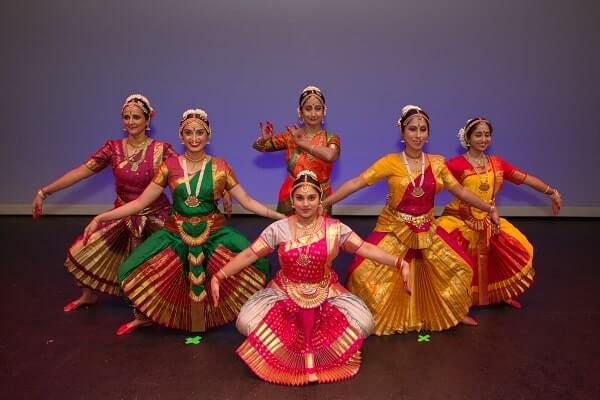In a wonderful highlight at dancer and dancer teacher Sashi Bala’s recent production for her Natyadharshan School of Indian Dance, the Sun God materialised in the auditorium, driven around the dais majestically in his elaborate chariot led by five horses.
A spectacular piece of choreography, the power, light and warmth of the sun shone through in this number, as did the compelling Hindu mythology that stands behind this life-giving celestial body.
The sequence represented the central theme in the production, titled ‘Finding the Light’.
It marked the celebration of 35 years of the School’s dedicated service to classical Indian dance, and was held at the Casula Powerhouse Museum Art Centre in mid-April. Students as well as teachers of the Natyadharshan School of Indian Dance showcased their skills.
Fittingly, the dance recital began with the Surya Namaskara – an obeisance to the Sun God, the jyothi or light that is the source or adhara of all life.
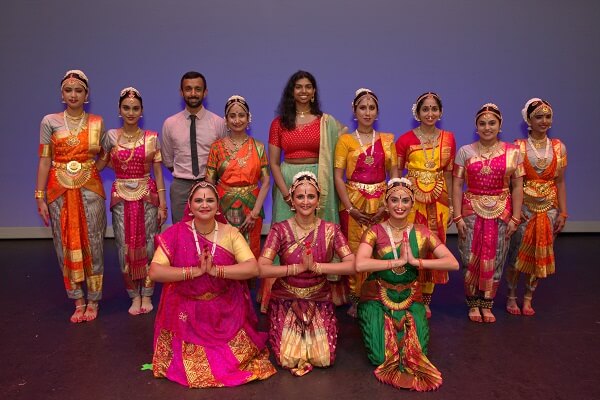
Then came Thillana, a formal Bharathanatya item, in a sort of introduction to the School itself. Many dancers including Sashi Bala, the director, appeared in this item. The grouping together of dancers as Krishna and Gopis at the end was capturing. A compelling choreography indeed to Raga Hamsanandi.
Earlier, the evening started off with a vocal recital by Vijaya Phanikumar. With remarkable diction, she rendered the Maha Ganapathim as invocation, then went on to Sriman Narayana, Parathpara and Entha Cheluvage, portraying the flights of the ragas admirably.
Then came the piece de resistance of the event, Pannirendu Matha Bhavani Vizha or The Welcoming of Twelve Months. As the name suggests, it was a series of twelve dances, one dedicated to each month of the Christian calendar.
Hindu culture has it that life is a gift, and we must celebrate it. And so, to escape the monotony of daily life, we’ve “invented” festivals to observe every now and then. During these, we mix with friends and relatives and celebrate with food, music and dance. This was very well brought out in the item.
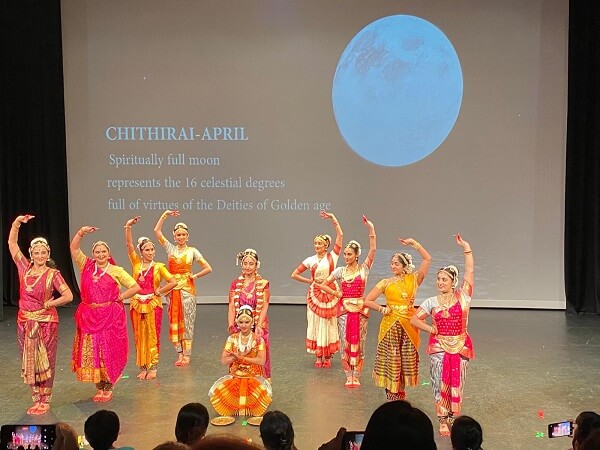
Tied to each month are the seasons, which have their own specialities. Every season has its unique festivals and associated deities.
There was an abundant variety in this bouquet of dances, mostly abhinaya based. Many a time, they took the form of folk dances, perhaps appropriately. Expression remained the main motive. We saw fitting backdrops for each of the segments and pre-recorded music, rendered in pleasing ragas.
In the Aadi (July) segment, Mythili danced out as Durga, Mariamma etc as the symbol of Shakthi. It was a grand dance to a popular tune depicting sequences from mythology.
While we saw Krishna in Avani (August, by Santoshi), Sashi Bala herself performed for Puratsi (September) to a pleasing Ananda Bhairavi Ragam. We had Deepavali celebrations as well.
For Karthikai (November), it was charming to see Ankitha perform in white Kerala-style costume with a plate in each hand. The music in Dwijavanthi Raga totally fit the mood here.
Kavitha brought out an expressive harvest dance with lively abhinaya for Thai (January).
Other dancers included Ankitha and Rachana (Chithirai, April), Thanisha (Vaikasi, May), Monisha (Aani, June), Sashi Bala (Marghazi, December), Monisha (Ipasi, October), Shreya (Masi, February), and Dr. Vani (Pamguni, March).
There was a lovely coming together of all the dancers for the Mangalam, Ahigiri Nandini.
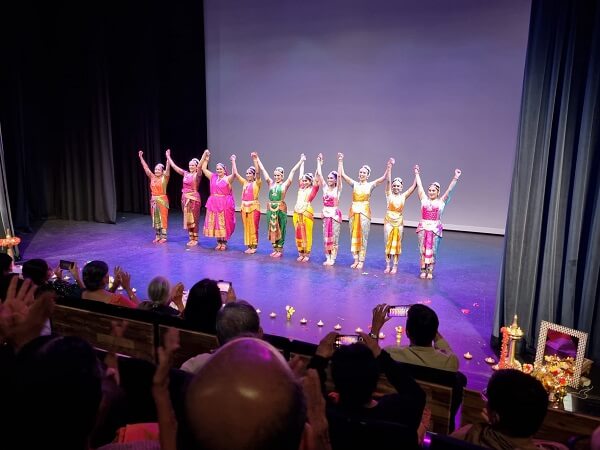
Remarkably, the program ‘Finding the Light’, was a discovery into the purpose of life through dance. It reflected to us the beliefs of Indian people in observing various festivals and praying to various Gods and Goddesses. Dancing is not just an execution of certain movements to a rhythm. It gives the dancer and the spectator an experience and a timeless moment, as we escape briefly our day-to-day routine and concerns.
In her address at the end, Sashi Bala spoke of the evolution of the school from ‘the cassette age to the digital’. She felicitated present and past students, some of who started as young kids and are young mothers now. While she thanked God and her gurus for the success of the school, the students replied saying that their guru, Sashi has helped them meet challenges in life through devotion and dedication required of any dance student.
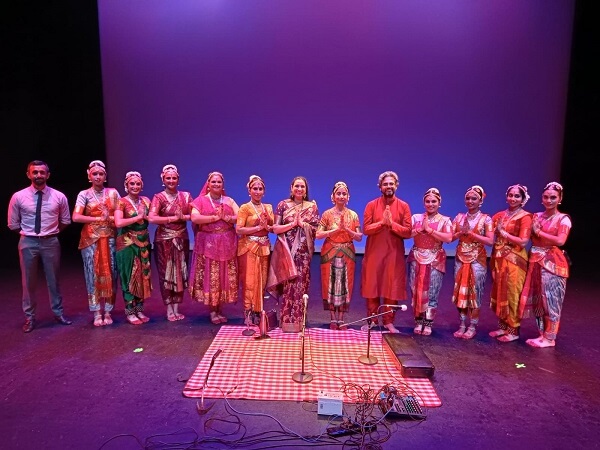
The evening had an undercurrent of the spirit of Brahma Kumaris; BK Ranjini Sairam prepared the audience with a small meditation session.
One of the most welcome features of the evening was that it was just the right duration. It did not extend too long in time, nor were there too many items.
Varun Bala, Sashi Bala’s son, provided good support as MC.
We wish the Natyadharshan School of Indian Dance success in all its future endeavours, not only as it keeps the tradition alive, but attracts more and more talent to its fold.
READ ALSO: Kavitha Sathiakumar: A doctor-dancer’s delightful debut



